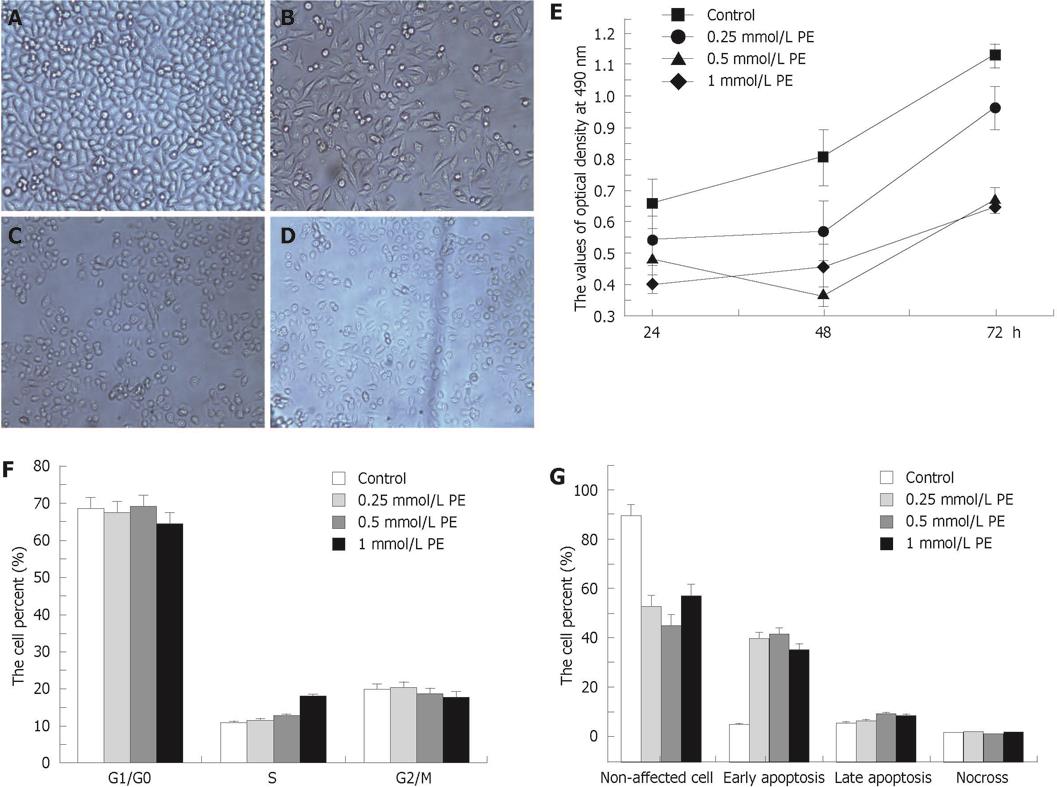Copyright
©2009 The WJG Press and Baishideng.
World J Gastroenterol. Apr 14, 2009; 15(14): 1751-1758
Published online Apr 14, 2009. doi: 10.3748/wjg.15.1751
Published online Apr 14, 2009. doi: 10.3748/wjg.15.1751
Figure 1 Effect of exogenous PE on the growth and apoptosis of human hepatoma HepG2 cells.
A: Control group; B: 0.25 mmol/L PE; C: 0.5 mmol/L PE; D: 1 mmol/L PE; E: 48 h after treatment, inhibition of cell growth shown by MTT assay; F: Cell cycle in human hepatoma HepG2 cells shown by PI staining 24 h after PE treatment, with data showing the cell percentages at G1/G0, S and G2 phases; G: Apoptosis of human hepatoma HepG2 cells shown by annexin-V/PI staining 24 h after PE treatment, with data showing the percentages of non-affected, early and late apoptotic cells and necrosis. The results are given as mean ± SD from three experiments.
-
Citation: Yao Y, Huang C, Li ZF, Wang AY, Liu LY, Zhao XG, Luo Y, Ni L, Zhang WG, Song TS. Exogenous phosphatidylethanolamine induces apoptosis of human hepatoma HepG2 cells
via the bcl-2/bax pathway. World J Gastroenterol 2009; 15(14): 1751-1758 - URL: https://www.wjgnet.com/1007-9327/full/v15/i14/1751.htm
- DOI: https://dx.doi.org/10.3748/wjg.15.1751









